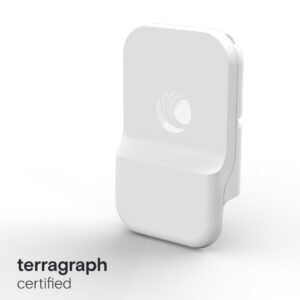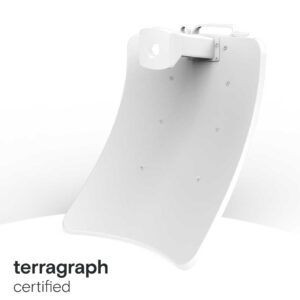cnWave Cambium Networks
Cambium Networks’ 60 GHz cnWave solution provides easy, fast and cost-effective wireless gigabit connectivity for edge access and/ or high-capacity backhaul for edge access solutions at a significantly lower TCO than fiber infrastructure. Service providers and enterprises now have access to gigabit for business and residential connectivity, backhaul for Wi-Fi access or LTE/5G small cell. Certified for Facebook Terragraph, cnWave mesh solutions are highly efficient at handling high-density deployments in cities and suburban areas. Millimeter wave fixed wireless technology enables service providers and enterprise network operators to extend their network with multi-gigabit speeds in urban, suburban and rural locations.
Whether it is licensed mmWave or Cambium Core technology that you are looking for, we have the products and value-add services you need
cnWave Cambium Networks Key Features
Multi-Gigabit Edge Capacity to Meet Demand
Millimeter wave fixed wireless technology enables service providers and enterprise network operators to extend their network with multi-gigabit speeds in urban, suburban and rural locations.
Wi-Fi deployments require higher WAN capacity, forcing convergence of the WAN and LAN. Millimeter wave technology offers multi-gigabit speeds in multiple configurations for last-mile access and backhaul for Wi-Fi hotspots or MicroPoP access. A multi-mode system can be configured for Point-to-Point (PTP), Point-to-Multipoint (PMP), or efficient mesh modes. Certified for highly efficient Facebook Terragraph distributed mesh technology, 60 GHz solutions make it easy to provide efficient multi-gigabit speeds in the heart of any city.
Multi-gigabit wireless communications at the edge of the network provide high-speed access to bridge the digital divide in the following applications:
– Business and residential broadband access
– Campus area networks including hospitals, enterprise campus, K-12 and higher education campuses and event locations
– Campus area networks including hospitals, enterprise campus, K-12 and higher education campuses and event locations
– Infrastructure for Multi-Dwelling Units (MDUs) including apartment buildings, dormitories, elder care facilities
– Wireless infrastructure for CCTV and video surveillance camera locations
– Infrastructure for service provider 4G or 5G small cell coverage areas
– Wireless bridges for fiber or cable networks
The 802.11ay Standard
TDMA/TDD vs CSMA
802.11ay is based on TDMA/TDD channel access with network synchronization. This technology is preferred for outdoor fixed wireless applications because the synchronized system reduces interface and maximizes frequency reuse.
Support for More CPE
The 802.11ad standard supports 8 Client Nodes per sector, while 802.11ay supports 15 Client Nodes per sector. As a result, the solution opens more opportunities for business cases and deployment strategies.
Support for Mesh Architectures
The 802.11ay standard also supports meshing technology to provide a highly reliable and flexible Layer 3 architecture to facilitate network design and deployment.
Channel Bonding Technology
Channel Bonding allows two contiguous channels to be merged into a single wideband channel, thereby doubling the capacity to 4.32 Gbps. 802.11ad does not support Channel Bonding and is limited to a single radio. Hence 802.11ay will always outperform 802.11ad.




